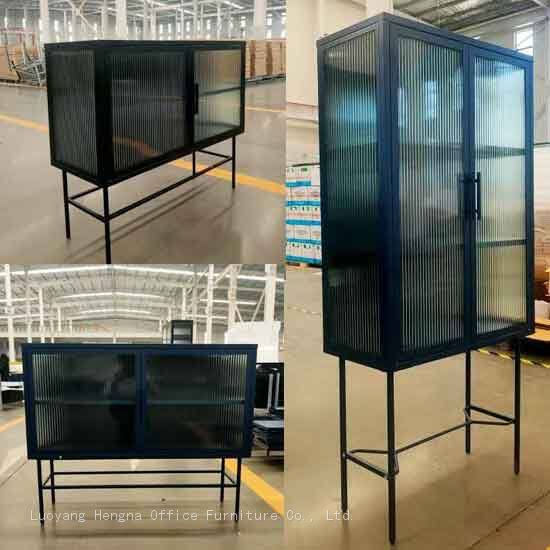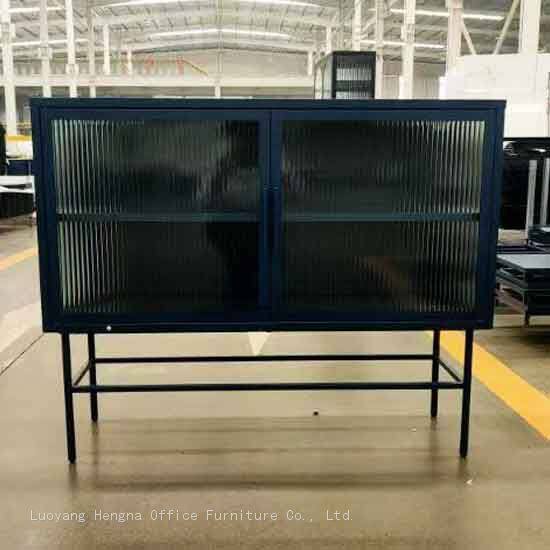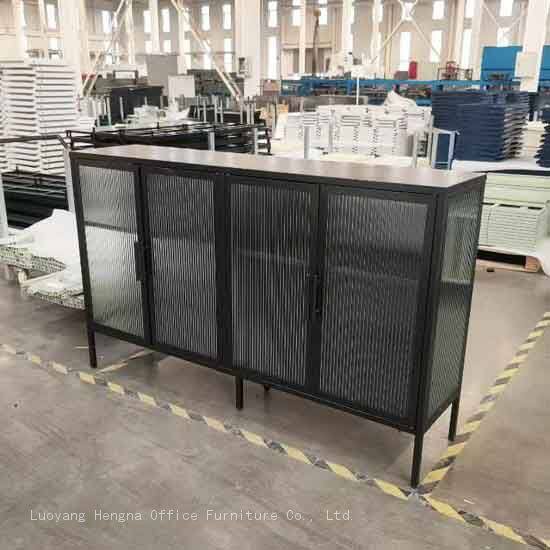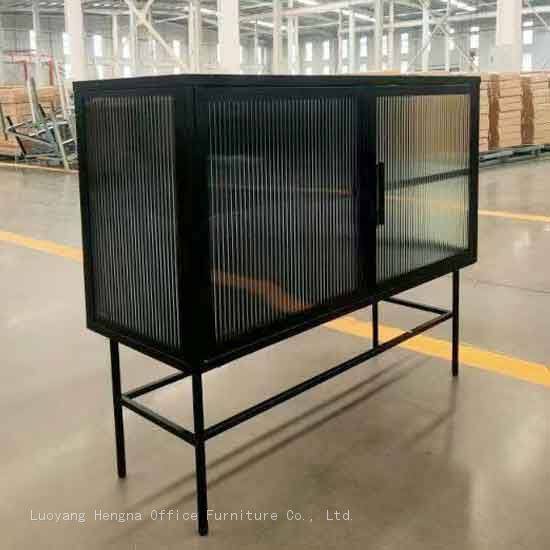-
 Sarah
Hi there! Welcome to my shop. Let me know if you have any questions.
Sarah
Hi there! Welcome to my shop. Let me know if you have any questions.
Your message has exceeded the limit.

Preserve Rare Books & Documents with Archival-Quality Display Cabinets
2025-10-31 08:55:23
Libraries, archives, and educational institutions face the critical responsibility of preserving rare books and historical documents while making them accessible for research and education. Archival-quality display cabinets represent essential tools in this preservation mission, providing controlled environments that protect fragile materials from environmental damage while allowing for scholarly access and public appreciation. This comprehensive examination explores how institutions can select and implement display solutions that balance preservation requirements with access needs, ensuring that valuable cultural heritage materials remain available for future generations. The Science of Paper Preservation Paper-based materials face numerous threats that can cause irreversible damage over time, including acid hydrolysis, oxidation, and environmental stress. Archival display cabinets must create stable microenvironments that mitigate these threats through precise control of temperature, humidity, and light exposure. The understanding of paper chemistry and deterioration mechanisms is essential for selecting appropriate display cabinet features that will extend the lifespan of rare materials. Temperature control systems must maintain consistent conditions between 65-70°F (18-21°C) to slow chemical deterioration processes while remaining comfortable for researcher access. Humidity control is equally critical, with relative humidity levels maintained between 45-55% to prevent mold growth while minimizing fiber stress. These environmental parameters must be maintained within narrow tolerances to provide optimal protection for valuable paper materials. Light Control and UV Protection Light exposure represents one of the most significant threats to paper-based materials, causing fading, embrittlement, and chemical changes that accelerate deterioration. Archival display cabinets must provide complete light control when materials are not being viewed, with specialized filtering systems that remove harmful UV radiation when illumination is necessary for examination or display. LED lighting technology has become the standard for archival display due to its low heat output and minimal UV emissions. The integration of motion sensors and timers ensures that illumination occurs only when researchers or viewers are present, minimizing overall light exposure. Some advanced systems incorporate light meters that automatically adjust illumination levels to provide optimal viewing conditions while preventing overexposure. Security and Access Control Systems Rare books and documents often represent irreplaceable cultural heritage materials that require comprehensive security protection. Archival display cabinets incorporate multi-layered security systems including high-security locking mechanisms, tamper-resistant construction, and integration with institutional security systems. The consideration of material value and rarity helps determine appropriate security levels for specific items. Access control systems ensure that only authorized personnel can access display cabinets for material handling or maintenance. Biometric authentication, electronic key cards, and detailed access logging create comprehensive security protocols. Some systems incorporate pressure sensors and vibration detectors that can trigger immediate alerts for potential security breaches or environmental anomalies. Material Selection and Chemical Stability The materials used in archival display cabinet construction must meet stringent conservation standards to prevent potential damage to stored materials. All materials must be chemically inert and free from acids, lignin, or other harmful substances that could accelerate paper deterioration. The use of archival-quality materials, including acid-free woods, powder-coated metals, and conservation-grade seals, ensures long-term material protection. The selection of glazing materials represents another critical consideration, with options including UV-filtering glass or acrylic that provides protection from harmful radiation while maintaining visibility for material examination. The careful testing and certification of all construction materials prevents potential chemical reactions that could damage stored materials over time, ensuring that display cabinets contribute to rather than compromise preservation efforts.
The Science of Paper Preservation Paper-based materials face numerous threats that can cause irreversible damage over time, including acid hydrolysis, oxidation, and environmental stress. Archival display cabinets must create stable microenvironments that mitigate these threats through precise control of temperature, humidity, and light exposure. The understanding of paper chemistry and deterioration mechanisms is essential for selecting appropriate display cabinet features that will extend the lifespan of rare materials. Temperature control systems must maintain consistent conditions between 65-70°F (18-21°C) to slow chemical deterioration processes while remaining comfortable for researcher access. Humidity control is equally critical, with relative humidity levels maintained between 45-55% to prevent mold growth while minimizing fiber stress. These environmental parameters must be maintained within narrow tolerances to provide optimal protection for valuable paper materials. Light Control and UV Protection Light exposure represents one of the most significant threats to paper-based materials, causing fading, embrittlement, and chemical changes that accelerate deterioration. Archival display cabinets must provide complete light control when materials are not being viewed, with specialized filtering systems that remove harmful UV radiation when illumination is necessary for examination or display. LED lighting technology has become the standard for archival display due to its low heat output and minimal UV emissions. The integration of motion sensors and timers ensures that illumination occurs only when researchers or viewers are present, minimizing overall light exposure. Some advanced systems incorporate light meters that automatically adjust illumination levels to provide optimal viewing conditions while preventing overexposure. Security and Access Control Systems Rare books and documents often represent irreplaceable cultural heritage materials that require comprehensive security protection. Archival display cabinets incorporate multi-layered security systems including high-security locking mechanisms, tamper-resistant construction, and integration with institutional security systems. The consideration of material value and rarity helps determine appropriate security levels for specific items. Access control systems ensure that only authorized personnel can access display cabinets for material handling or maintenance. Biometric authentication, electronic key cards, and detailed access logging create comprehensive security protocols. Some systems incorporate pressure sensors and vibration detectors that can trigger immediate alerts for potential security breaches or environmental anomalies. Material Selection and Chemical Stability The materials used in archival display cabinet construction must meet stringent conservation standards to prevent potential damage to stored materials. All materials must be chemically inert and free from acids, lignin, or other harmful substances that could accelerate paper deterioration. The use of archival-quality materials, including acid-free woods, powder-coated metals, and conservation-grade seals, ensures long-term material protection. The selection of glazing materials represents another critical consideration, with options including UV-filtering glass or acrylic that provides protection from harmful radiation while maintaining visibility for material examination. The careful testing and certification of all construction materials prevents potential chemical reactions that could damage stored materials over time, ensuring that display cabinets contribute to rather than compromise preservation efforts.
 Customization for Different Material Types Different types of rare materials require specialized display solutions tailored to their unique preservation needs. Rare book displays may require specialized cradles or supports that prevent stress on bindings while allowing for page examination. Document displays might need specialized mounting systems that secure fragile papers without causing damage. Photograph collections require particular attention to environmental control and mounting techniques that prevent image fading and support deterioration. Map collections may need large-format display solutions that accommodate oversized materials while providing adequate support and protection. The customization of display solutions for specific material types ensures optimal protection while facilitating appropriate access for research and education. Integration with Conservation Programs Archival display cabinets should integrate with broader institutional conservation programs and policies. Environmental monitoring systems should connect with centralized conservation management platforms that track conditions across multiple storage and display areas. The integration of display cabinet data with collection management systems helps institutions monitor material conditions and plan conservation interventions. Some institutions implement rotation schedules that limit the display time for particularly sensitive materials, using display cabinets as temporary exhibition venues before returning materials to more protected storage environments. The coordination of display and storage strategies ensures comprehensive protection while maximizing access opportunities for researchers and the public. Research Access and Educational Use While preservation remains paramount, archival display cabinets must facilitate appropriate research access and educational use. The design of display systems should consider researcher ergonomics, providing comfortable viewing angles and adequate space for note-taking or photography when permitted. Some systems incorporate specialized lighting that enhances readability without causing damage. Educational displays may incorporate interpretive elements that provide context for displayed materials while maintaining appropriate protection. The integration of digital technologies can provide additional information and access to related materials without physical handling of original items. These educational enhancements create engaging experiences while supporting conservation objectives. Compliance with Preservation Standards Archival display cabinets must comply with professional preservation standards and institutional policies. Organizations such as the American Institute for Conservation (AIC) and the International Council on Archives (ICA) provide guidelines for appropriate display conditions and materials. The selection of certified equipment and adherence to established standards ensures that display solutions support rather than compromise preservation efforts. Regular consultation with conservation specialists helps ensure that display cabinet implementations meet professional standards and institutional requirements. The documentation of environmental conditions and material responses to display environments contributes to the broader knowledge base of preservation practice. This commitment to professional standards ensures the highest level of protection for valuable cultural heritage materials. Future Trends in Archival Display Technology The evolution of archival display technology continues to advance, creating new possibilities for material protection and access. Smart display systems with predictive environmental monitoring can anticipate potential conservation issues before they impact materials. Advanced imaging technologies may provide virtual access to materials without physical handling, reducing preservation risks while expanding access opportunities. Sustainability considerations are increasingly influencing archival display design, with energy-efficient systems and environmentally friendly materials becoming standard features. The integration of virtual and physical display experiences creates hybrid access models that extend scholarly reach beyond physical institutions. These technological advances promise to enhance both preservation capabilities and access opportunities for rare materials.
Customization for Different Material Types Different types of rare materials require specialized display solutions tailored to their unique preservation needs. Rare book displays may require specialized cradles or supports that prevent stress on bindings while allowing for page examination. Document displays might need specialized mounting systems that secure fragile papers without causing damage. Photograph collections require particular attention to environmental control and mounting techniques that prevent image fading and support deterioration. Map collections may need large-format display solutions that accommodate oversized materials while providing adequate support and protection. The customization of display solutions for specific material types ensures optimal protection while facilitating appropriate access for research and education. Integration with Conservation Programs Archival display cabinets should integrate with broader institutional conservation programs and policies. Environmental monitoring systems should connect with centralized conservation management platforms that track conditions across multiple storage and display areas. The integration of display cabinet data with collection management systems helps institutions monitor material conditions and plan conservation interventions. Some institutions implement rotation schedules that limit the display time for particularly sensitive materials, using display cabinets as temporary exhibition venues before returning materials to more protected storage environments. The coordination of display and storage strategies ensures comprehensive protection while maximizing access opportunities for researchers and the public. Research Access and Educational Use While preservation remains paramount, archival display cabinets must facilitate appropriate research access and educational use. The design of display systems should consider researcher ergonomics, providing comfortable viewing angles and adequate space for note-taking or photography when permitted. Some systems incorporate specialized lighting that enhances readability without causing damage. Educational displays may incorporate interpretive elements that provide context for displayed materials while maintaining appropriate protection. The integration of digital technologies can provide additional information and access to related materials without physical handling of original items. These educational enhancements create engaging experiences while supporting conservation objectives. Compliance with Preservation Standards Archival display cabinets must comply with professional preservation standards and institutional policies. Organizations such as the American Institute for Conservation (AIC) and the International Council on Archives (ICA) provide guidelines for appropriate display conditions and materials. The selection of certified equipment and adherence to established standards ensures that display solutions support rather than compromise preservation efforts. Regular consultation with conservation specialists helps ensure that display cabinet implementations meet professional standards and institutional requirements. The documentation of environmental conditions and material responses to display environments contributes to the broader knowledge base of preservation practice. This commitment to professional standards ensures the highest level of protection for valuable cultural heritage materials. Future Trends in Archival Display Technology The evolution of archival display technology continues to advance, creating new possibilities for material protection and access. Smart display systems with predictive environmental monitoring can anticipate potential conservation issues before they impact materials. Advanced imaging technologies may provide virtual access to materials without physical handling, reducing preservation risks while expanding access opportunities. Sustainability considerations are increasingly influencing archival display design, with energy-efficient systems and environmentally friendly materials becoming standard features. The integration of virtual and physical display experiences creates hybrid access models that extend scholarly reach beyond physical institutions. These technological advances promise to enhance both preservation capabilities and access opportunities for rare materials. Archival-quality display cabinets represent essential investments in cultural heritage preservation, providing controlled environments that protect rare books and documents while facilitating appropriate access for research and education. By incorporating advanced environmental control, comprehensive security features, appropriate materials, and integration with conservation programs, modern display solutions create optimal conditions for material preservation while supporting scholarly access. The strategic implementation of archival display solutions ensures that valuable cultural heritage materials remain available for future generations while serving current research and educational needs.
Archival-quality display cabinets represent essential investments in cultural heritage preservation, providing controlled environments that protect rare books and documents while facilitating appropriate access for research and education. By incorporating advanced environmental control, comprehensive security features, appropriate materials, and integration with conservation programs, modern display solutions create optimal conditions for material preservation while supporting scholarly access. The strategic implementation of archival display solutions ensures that valuable cultural heritage materials remain available for future generations while serving current research and educational needs.
Tags: Preserve Rare Books & Documents, Archival-Quality Display Cabinets, Display Cabinets

